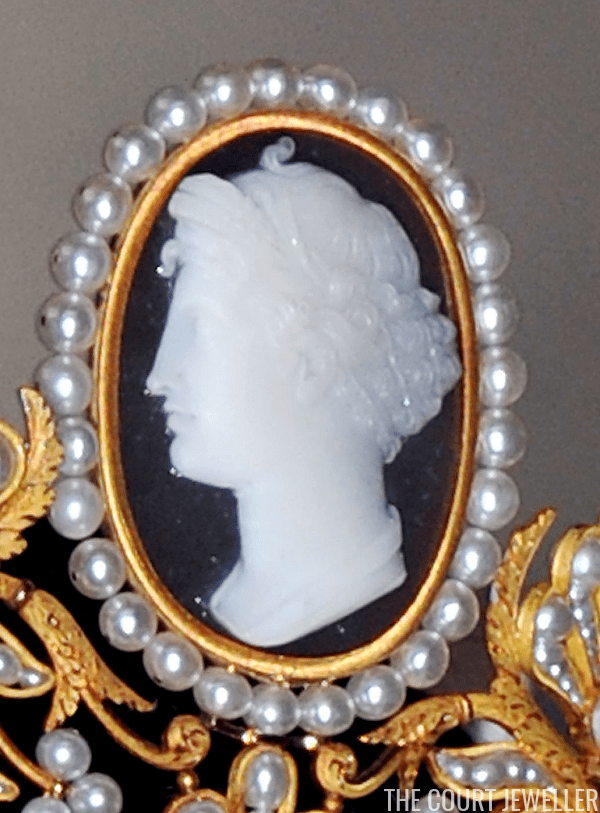 |
| SOREN ANDERSSON/AFP/Getty Images |
 |
| Pascal Le Segretain/Getty Images |
 |
| Pascal Le Segretain/Getty Images |
 |
| Pascal Le Segretain/Getty Images |
 |
| Pascal Le Segretain/Getty Images |
 |
| Pascal Le Segretain/Getty Images |
 |
| Pascal Le Segretain/Getty Images |
Don’t Miss a Single Sparkling Moment! Sign up for The Court Jeweller Newsletter
Sparkling Royal Jewels From Around the World
 |
| SOREN ANDERSSON/AFP/Getty Images |
 |
| Pascal Le Segretain/Getty Images |
 |
| Pascal Le Segretain/Getty Images |
 |
| Pascal Le Segretain/Getty Images |
 |
| Pascal Le Segretain/Getty Images |
 |
| Pascal Le Segretain/Getty Images |
 |
| Pascal Le Segretain/Getty Images |
 |
| The Nizam of Hyderabad Necklace, photographed in 2007 during the Buckingham Palace Summer Exhibition [Peter Macdiarmid/Getty Images] |
 |
| The necklace’s central element [Peter Macdiarmid/Getty Images] |
 |
| The upper portion of the detachable pendant [Peter Macdiarmid/Getty Images] |
 |
| Both of the necklace’s detachable pendants; note the large pear-shaped diamond in the lower pendant section [SHAUN CURRY/AFP/Getty Images] |
 |
| An elaborate section of the necklace’s chain [SHAUN CURRY/AFP/Getty Images] |
 |
| A view of the necklace’s open-backed collet chain and clasp [SHAUN CURRY/AFP/Getty Images] |
 |
| A look at the complete necklace [SHAUN CURRY/AFP/Getty Images] |
 |
| Crown Princess Victoria wears the cameos on her wedding day (Photo: Pascal Le Segretain/Getty Images) |
The parure of cameo jewelry that now belongs to the Swedish royal family is one of the most unique and interesting sets worn by royals today. The cameo suite was made in France during the first decade of the nineteenth century; researchers have argued very convincingly that the parure was owned and worn by Empress Josephine, first wife of Napoleon Bonaparte.
Today, the cameos belong to the Bernadottes of Sweden, who inherited them via the Duke of Leuchtenberg. The tiara has become something of an unofficial bridal diadem for the Swedish royal women. (You can read a more complete timeline of the set’s history here.) The central cameo in the tiara depicts a scene from the myth of Cupid and Psyche, but each cameo is unique. Here’s a series of images that give us a close-up look at the set, which is made of cameos, gold, diamonds, and pearls.
 |
| The Cameo Tiara, worn by Queen Silvia of Sweden at the 2005 Nobels [Photo: Pascal Le Segretain/Getty Images] |
 |
| The central cameo of the tiara, which features a scene from the myth of Cupid and Psyche [Photo: Pascal Le Segretain/Getty Images] |
 |
| Another cameo from the tiara; this one features a neoclassical portrait [Photo: Pascal Le Segretain/Getty Images] |
 |
| One of the gold and pearl anthemions that are interspersed between the tiara’s cameos. Note the delicate feathering in the gold design, as well as the tiny, graduated seed pearls [Photo: Pascal Le Segretain/Getty Images] |
 |
| The necklace features three strands of pearls interspersed by portrait cameos framed in diamonds [Photo: Pascal Le Segretain/Getty Images] |
 |
| Another view of the necklace and its three portrait cameos [Photo: Pascal Le Segretain/Getty Images] |
 |
| The elaborate diamond clasp of the necklace [Photo: Pascal Le Segretain/Getty Images] |
 |
| A close view of the bracelet, which features four strands of pearls interspersed with diamond-framed portrait cameos [Photo: Pascal Le Segretain/Getty Images] |
 |
| One of the earrings from the parure, which features a diamond-framed cameo suspended from additional diamonds. Note that this earring features a portrait cameo of a soldier [Photo: Pascal Le Segretain/Getty Images] |
 |
| The earrings are not a matched set; here is a look at the other earring, which features a different portrait cameo. (It’s hard to see here, but this one appears to feature a figure crowned with laurel. Perhaps symbolism related to war and peace/victory?) [Photo: Marc Piasecki/Getty Images] |
 |
| The brooch, possibly a later addition to the set, features a portrait cameo set in an elaborate diamond floral frame [Photo: Pascal Le Segretain/Getty Images] |
 |
| Another angle on the cameo brooch, in slightly different lighting [Photo: Pascal Le Segretain/Getty Images] |